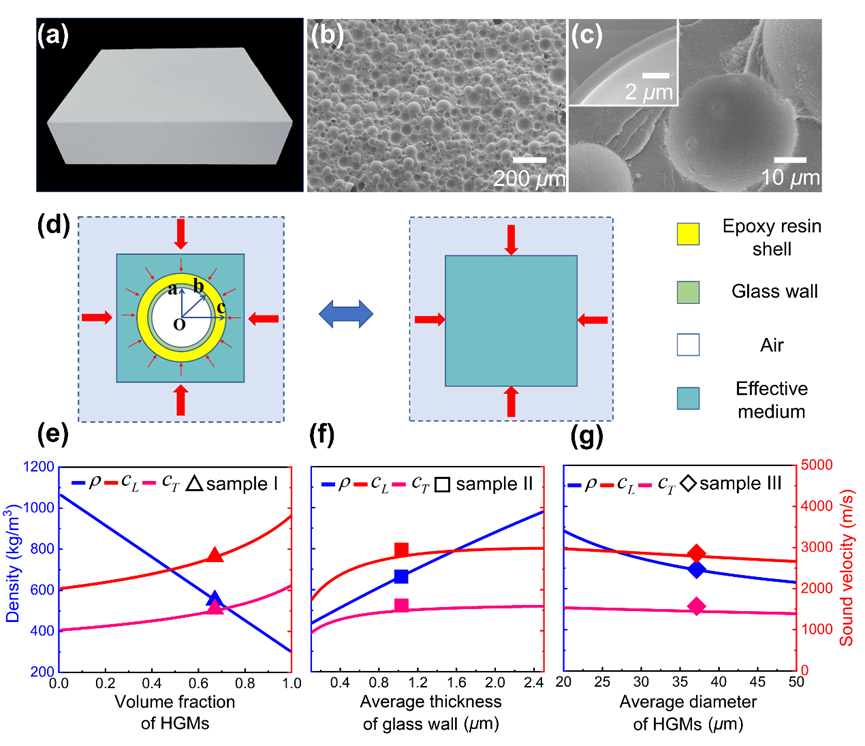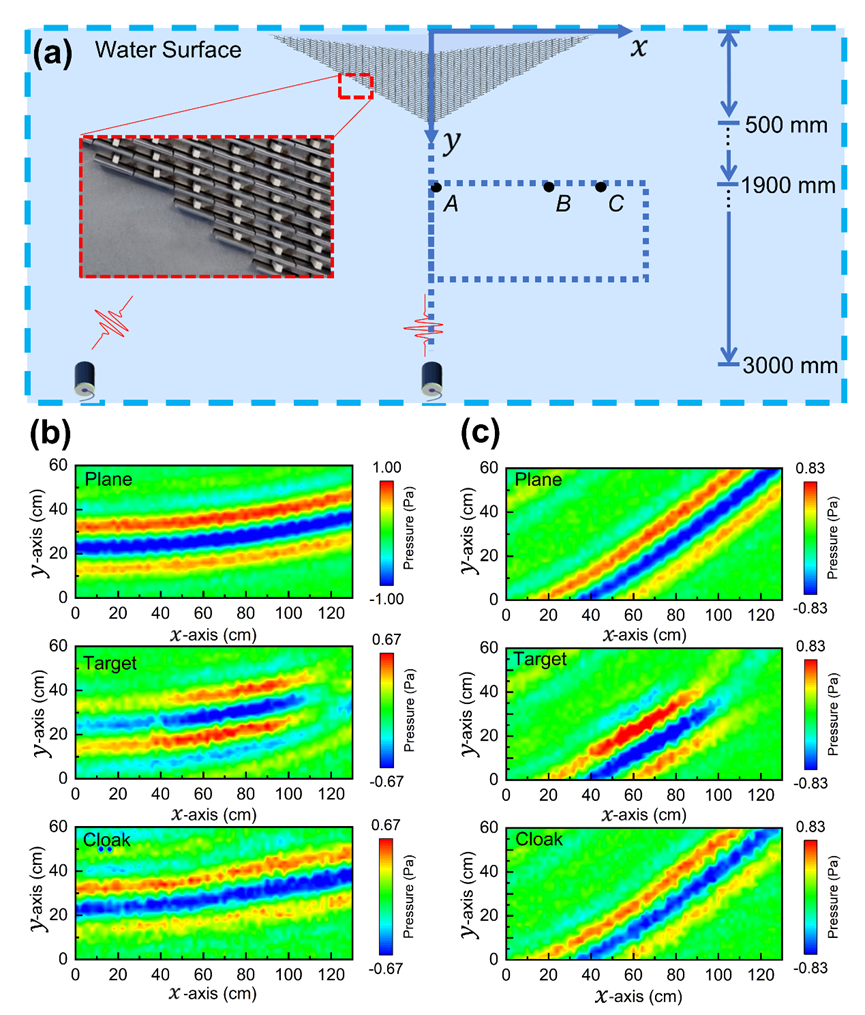Realized by controlling the wave propagation, acoustic camouflage has attracted great attention in recent years. Aided by a reflecting surface, acoustic carpet cloak has become one of the most practically feasible invisibility devices and captured much experimental research enthusiasm.
Researchers from the Institute of Acoustics of the Chinese Academy of Sciences (IACAS) have been engaged in the research of acoustic carpet cloak for a long time and made many achievements. In previous studies, the team realized two-dimensional acoustic illusion by using perforated plate structure in the air and then extended it to underwater two-dimensional and three-dimensional acoustic carpet cloak which filled the gap of this research in underwater field. However, owing to the difficulty in the realization of ideal material parameters, the implemented cloak is still underperforming at a large angle.
On the basis of the above researches, to further improve the stealth performance of the underwater acoustic carpet cloak at large incident angle, researchers from IACAS along with researchers from Technical Institute of Physics and Chemistry of the Chinese Academy of Sciences designed an underwater carpet cloak for broadband and wide-angle acoustic camouflage using a three-component metafluid composed of syntactic foam, steel and water. They employed a four-phase model to characterize and precisely regulation the acoustic parameters of the syntactic foam. Combined with Biot theory, they realized synergetic regulation of structure and material parameters in the design of the metafluid.
By periodically embedding the syntactic foam and steel rods in water, researchers designed and prepared a two-dimensional underwater acoustic carpet cloak. The experiment demonstration was conducted in an anechoic water tank. Experimental results indicate that the designed carpet cloak works well under both normal and oblique incidences with broadband frequencies.
In this work, the implementation of the designed underwater carpet cloak paves the way for the future application. Moreover, the introduction of syntactic foam in the design of the carpet cloak provides an extra degree of freedom for the acoustic parameter regulation of the metafluid in underwater acoustic devices.
The research, published online in the academic journal Physical Review Applied on July 20, 2022, was supported by the Key-Area Research and Development Program of Guangdong Province (No.2020B010190002), the National Natural Science Foundations of China (No.11874383, 12104480) and the IACAS Frontier Exploration Project (No.QYTS202110).

Figure 1. Characterization of the syntactic foam. (Image by IACAS)

Figure 2. Experimental demonstration of the underwater acoustic carpet cloak. (Image by IACAS)
Reference:
Ping Zhou, et al, Underwater Carpet Cloak for Broadband and Wide-Angle Acoustic Camouflage Based on Three-Component Metafluid. Physical Review Applied 18, 014050(2022). DOI: 10.1103/PhysRevApplied.18.014050.
Contact:
ZHOU Wenjia
Institute of Acoustics, Chinese Academy of Sciences, 100190 Beijing, China
E-mail: media@mail.ioa.ac.cn


